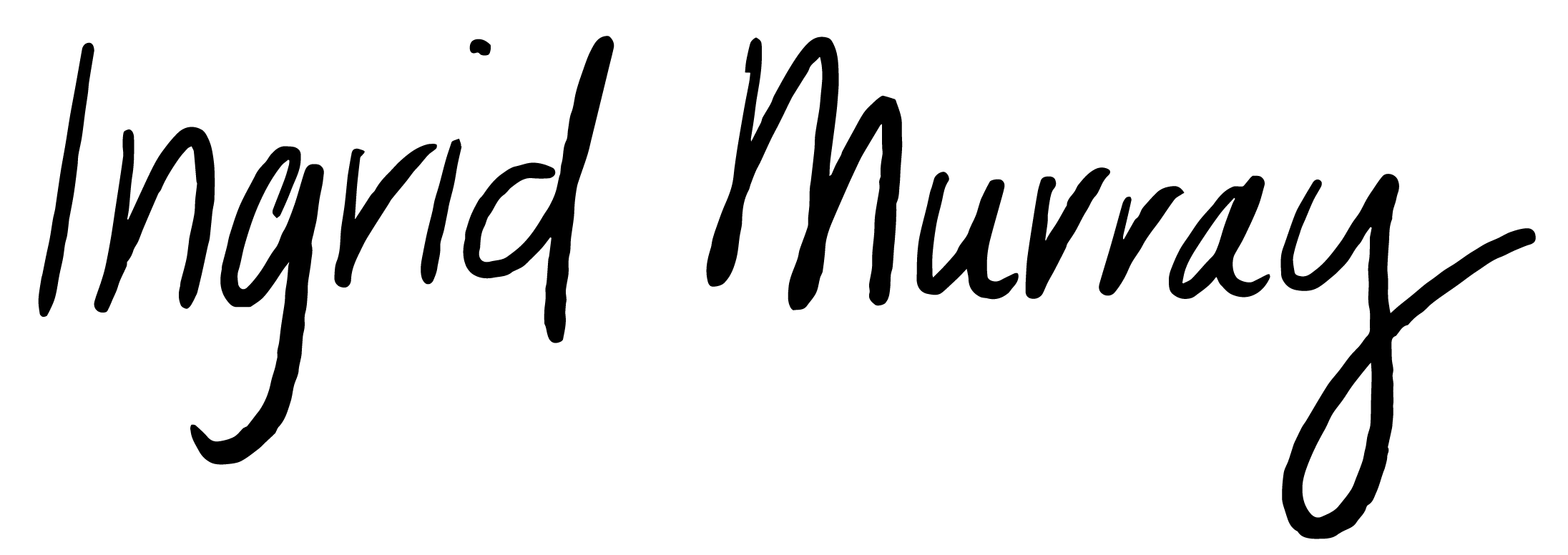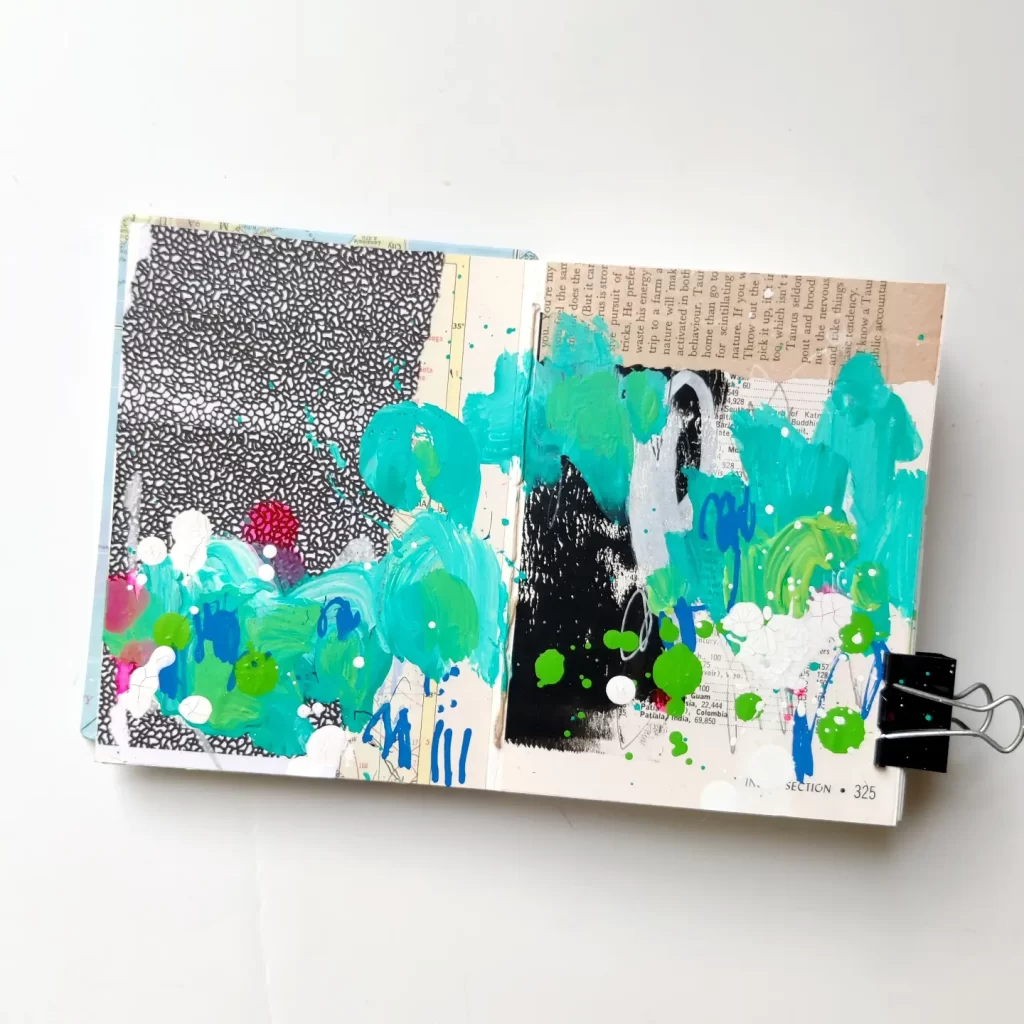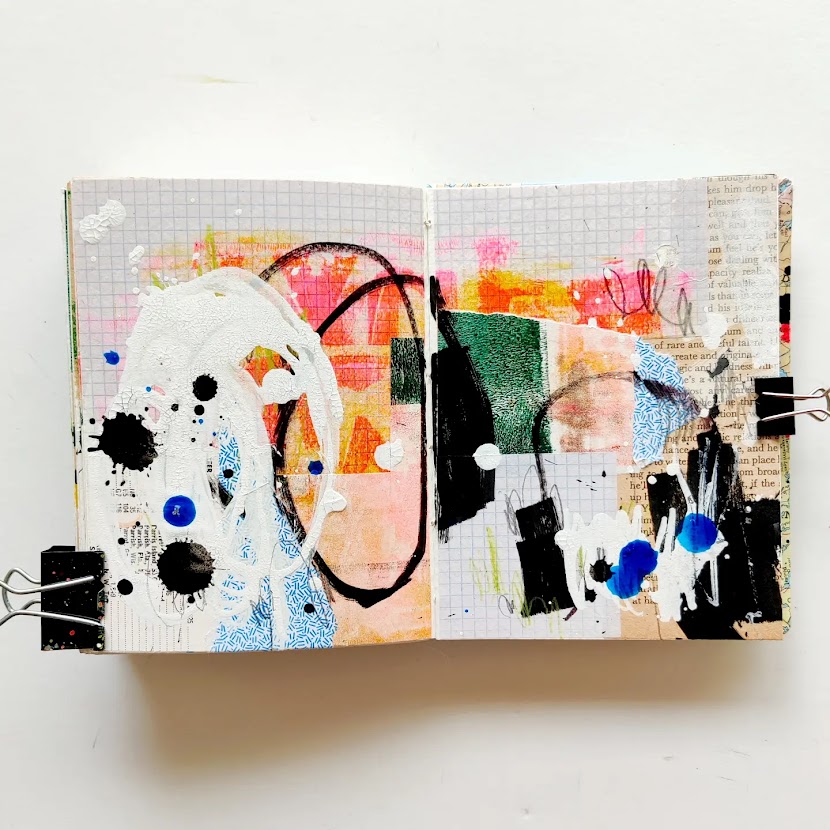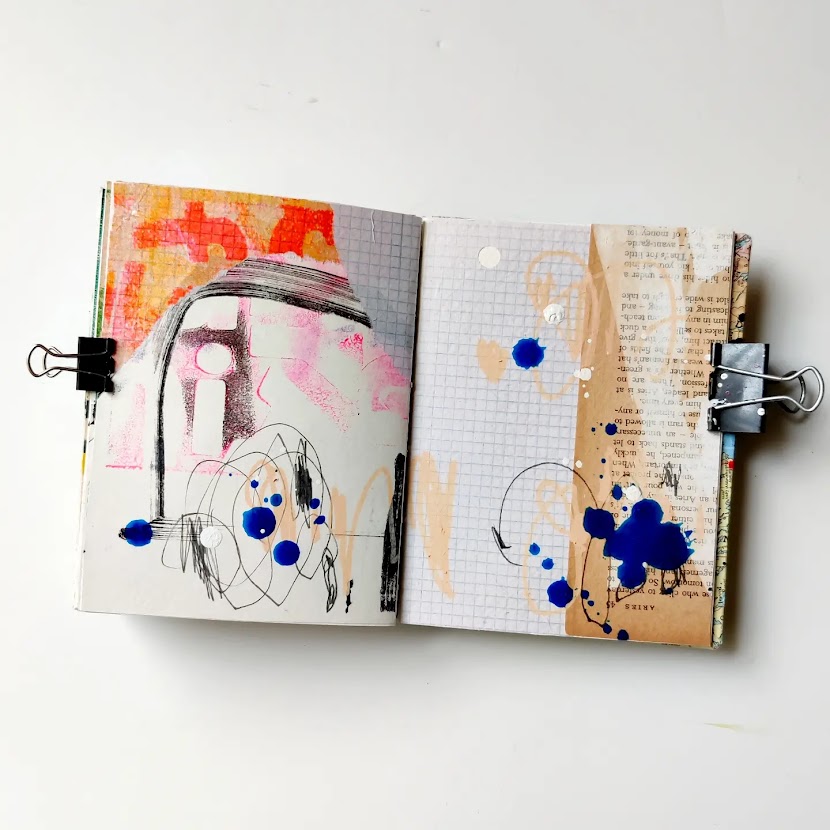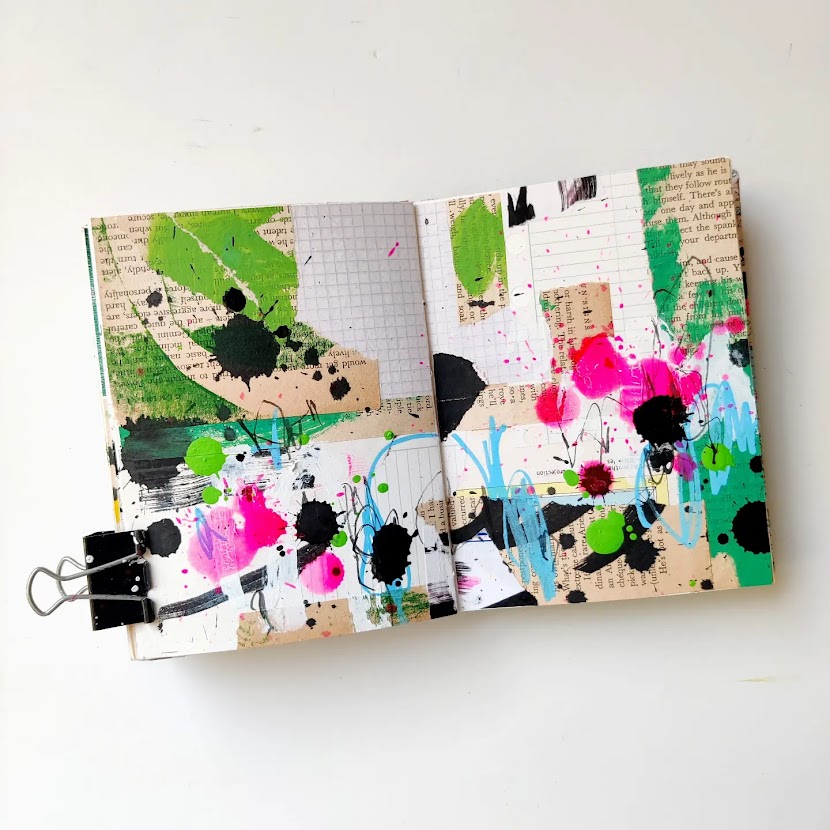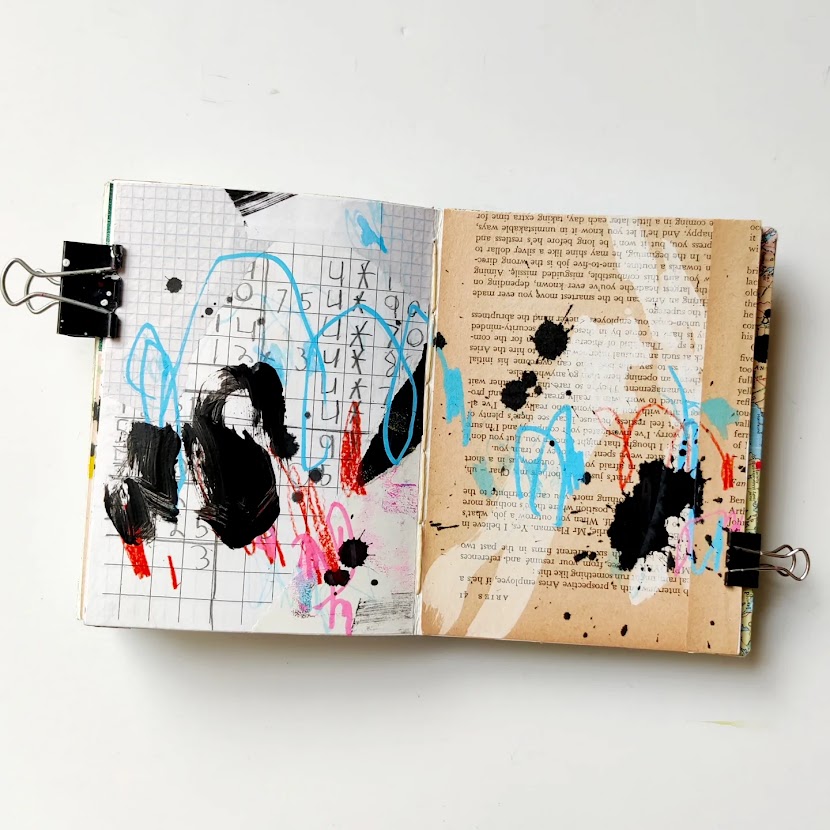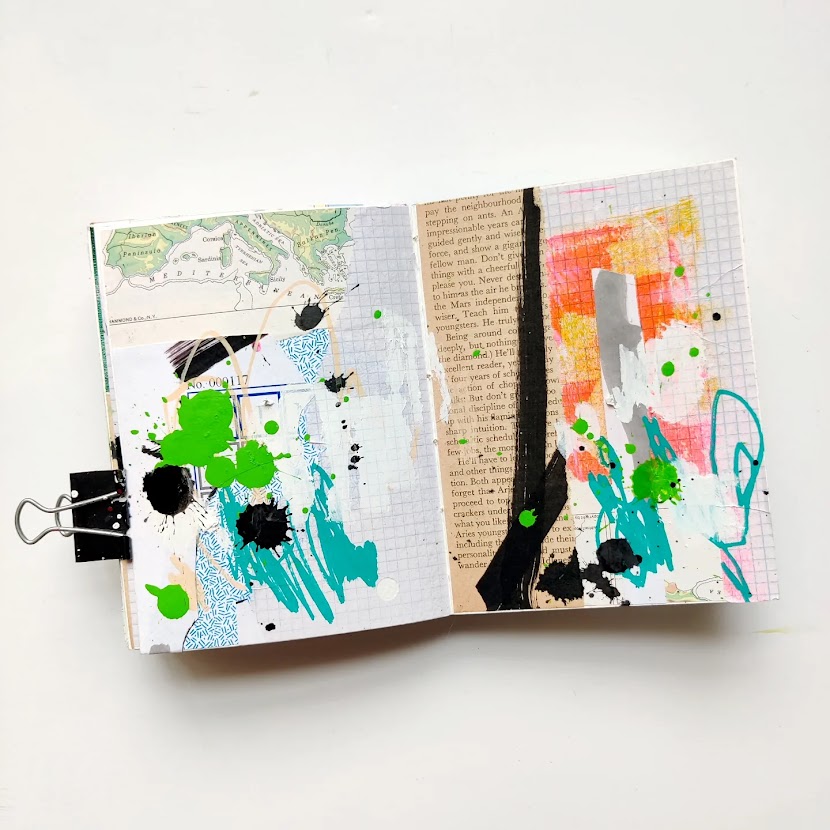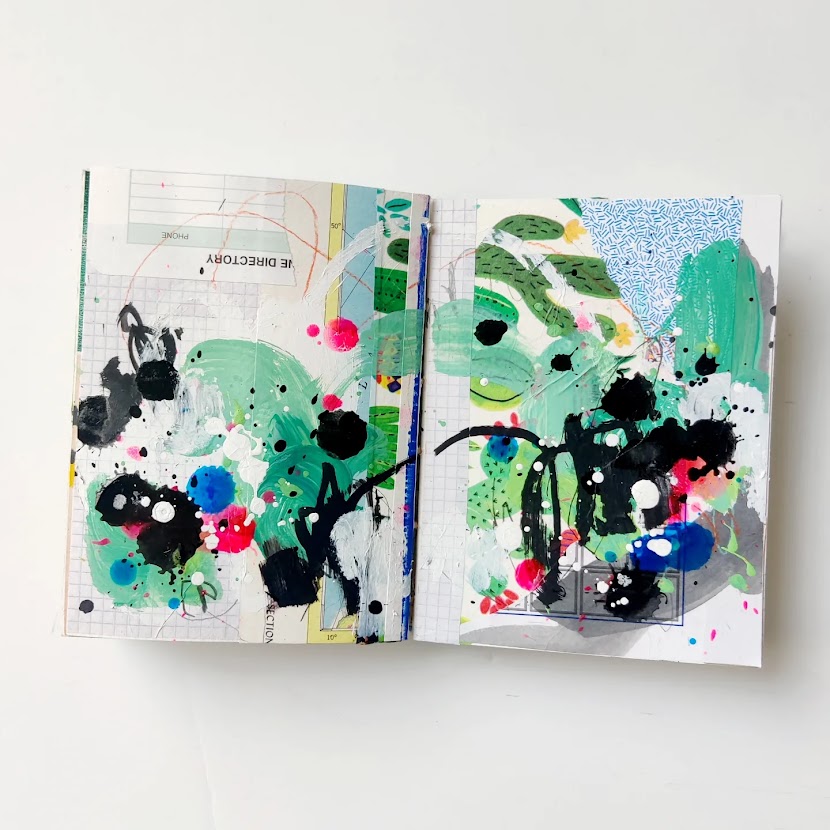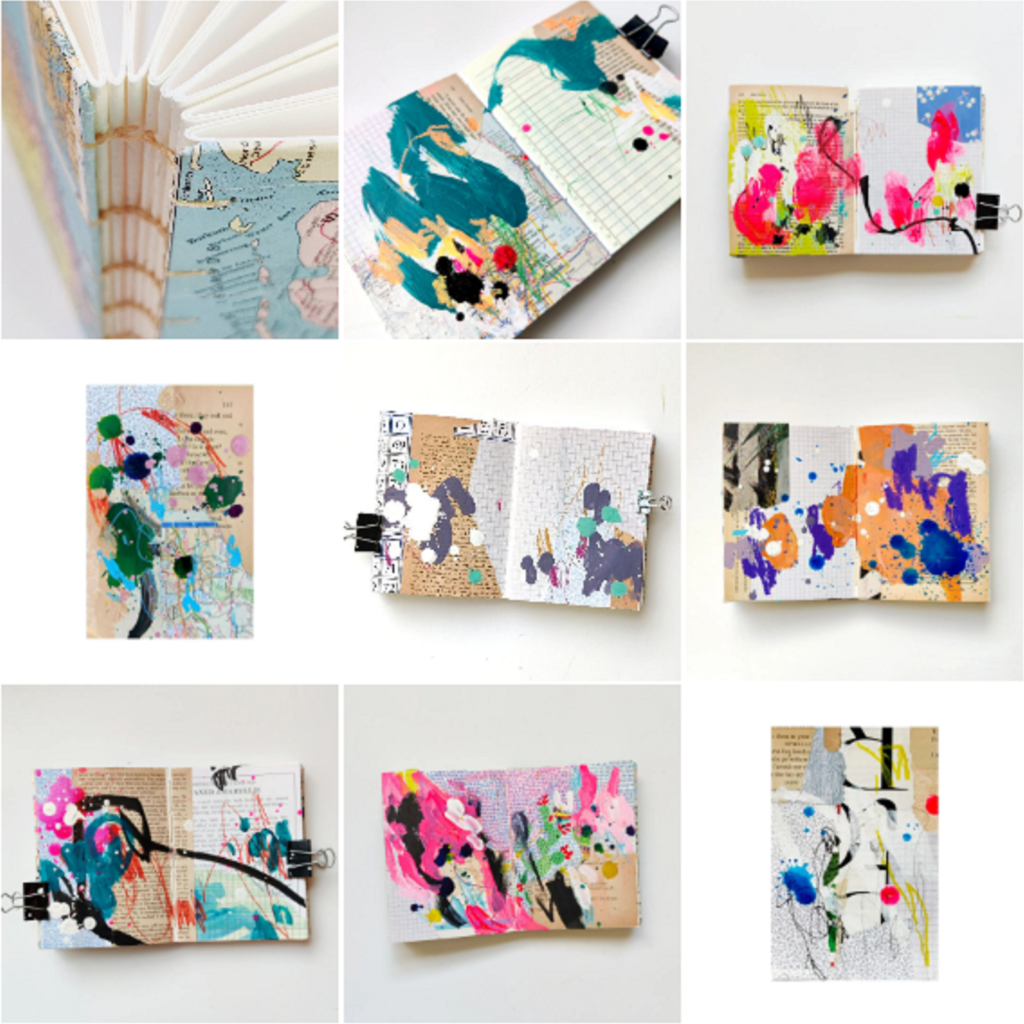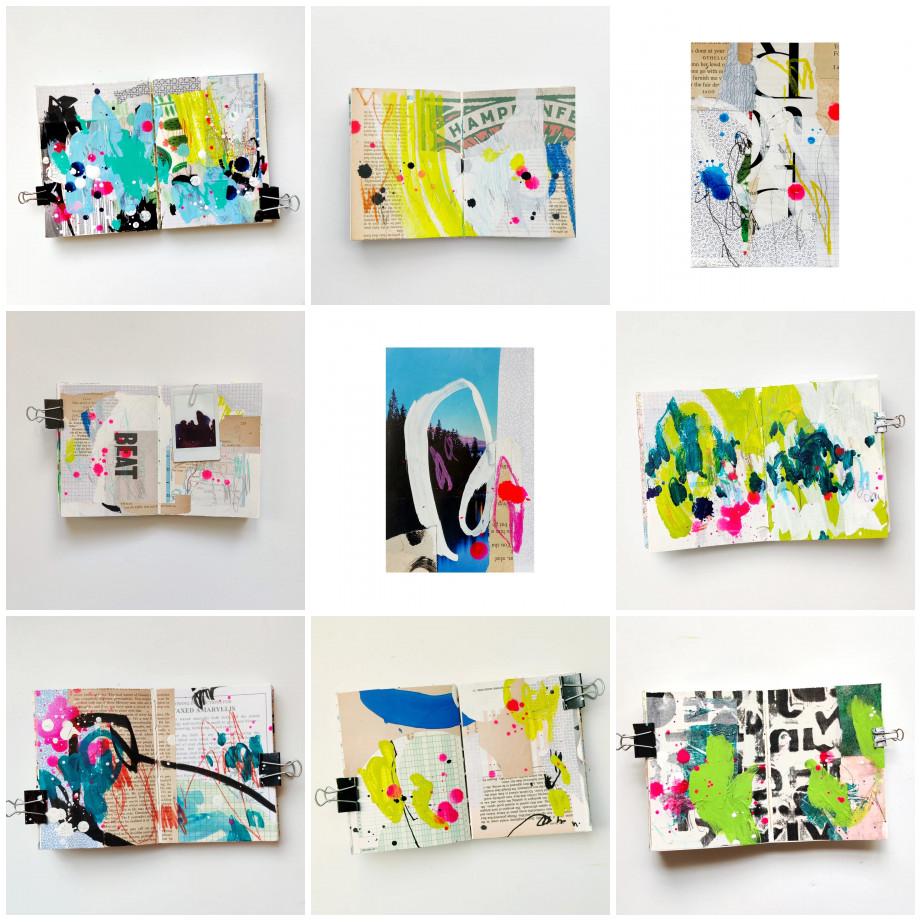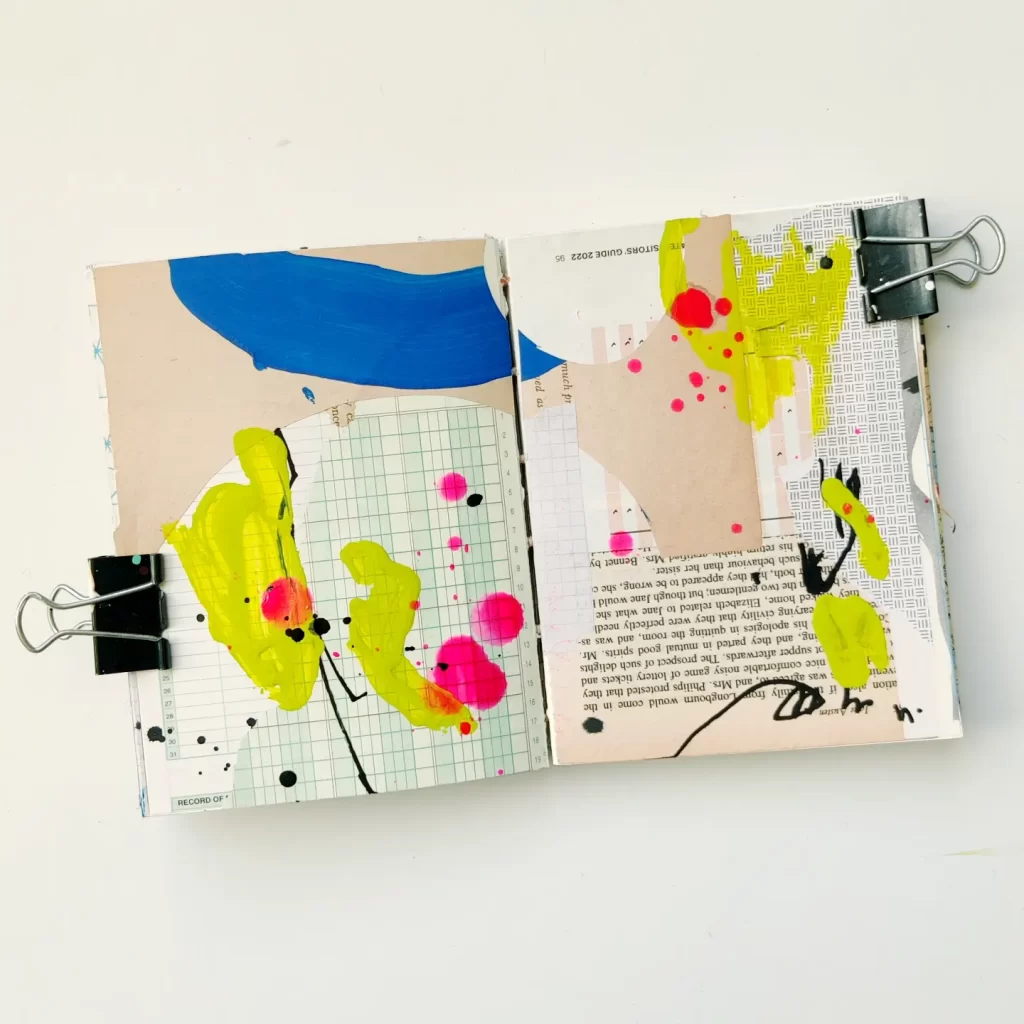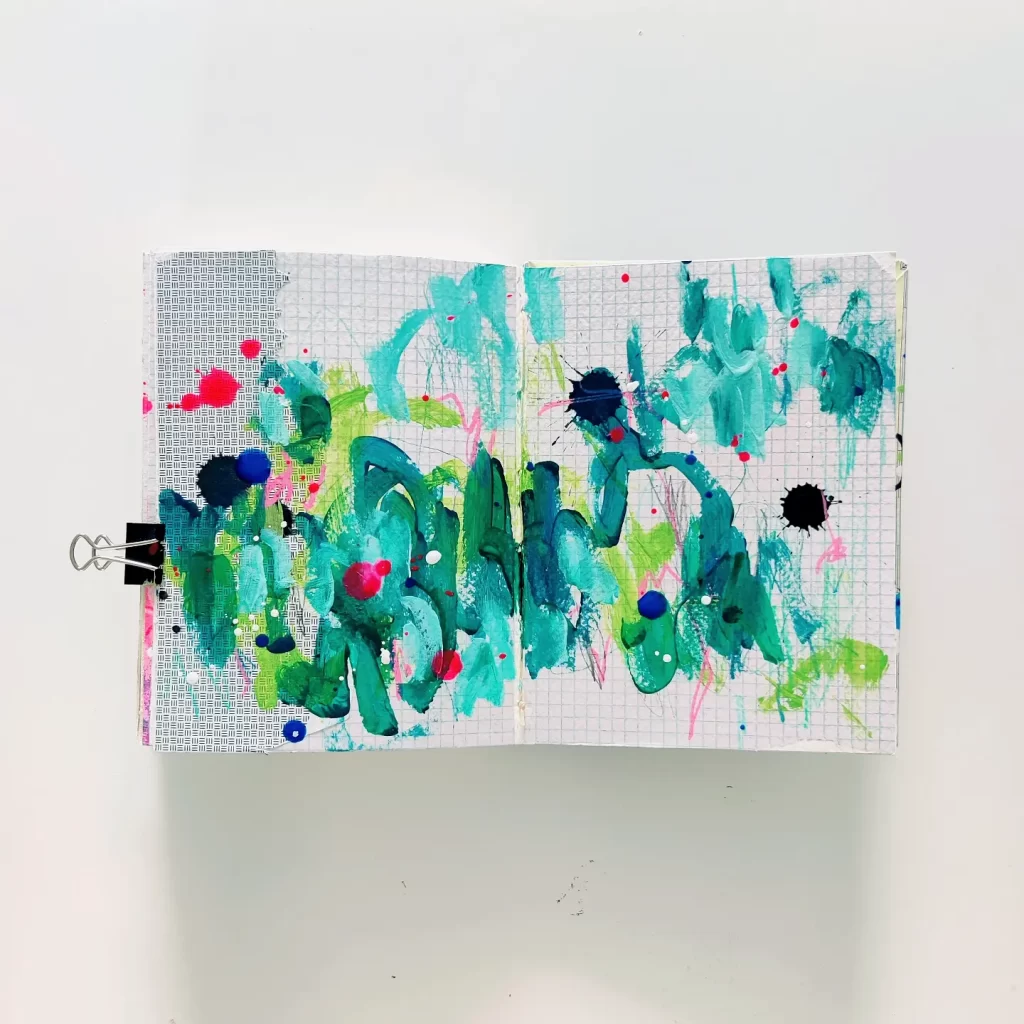
I admire photorealism: it takes a huge amount of patience and technical skill to represents external reality well.
What I love about abstract art, though, is the conveying of emotion, experience, thought, and existence through form, color, movement, texture, and composition. It represents internal reality.
When I create my work, I tap into a sense of childlike wonder, letting intuition and joy lead the creative process. I choose colors that feel right in that moment. I scribble and splatter. I react to what’s on the page; nothing is preplanned.
Last year, I went to see a Joan Mitchell exhibition at the Baltimore Museum of Art. Joan’s paintings are huge and inspired by “remembered landscapes that I carry with me — and remembered feelings of them, which of course become transformed. … I could certainly never mirror nature. I … like more to paint what it leaves me with.”
The point of abstract art is expression and curiosity, not perfection.
